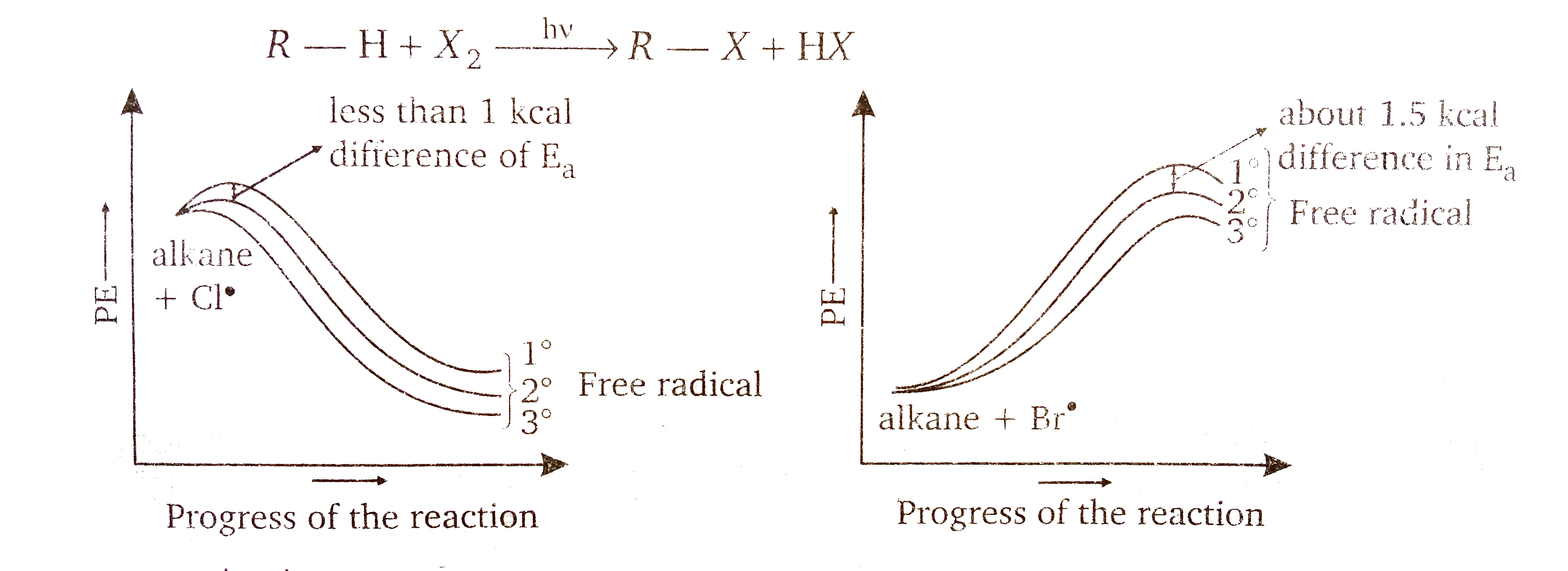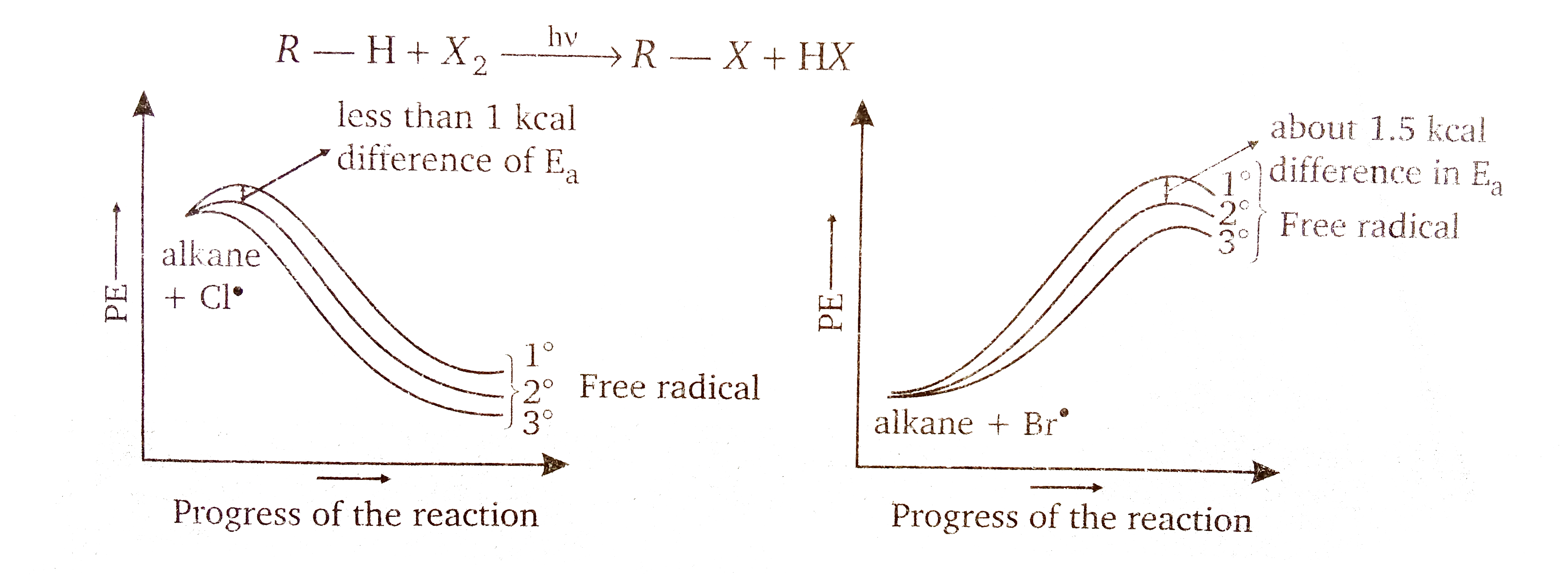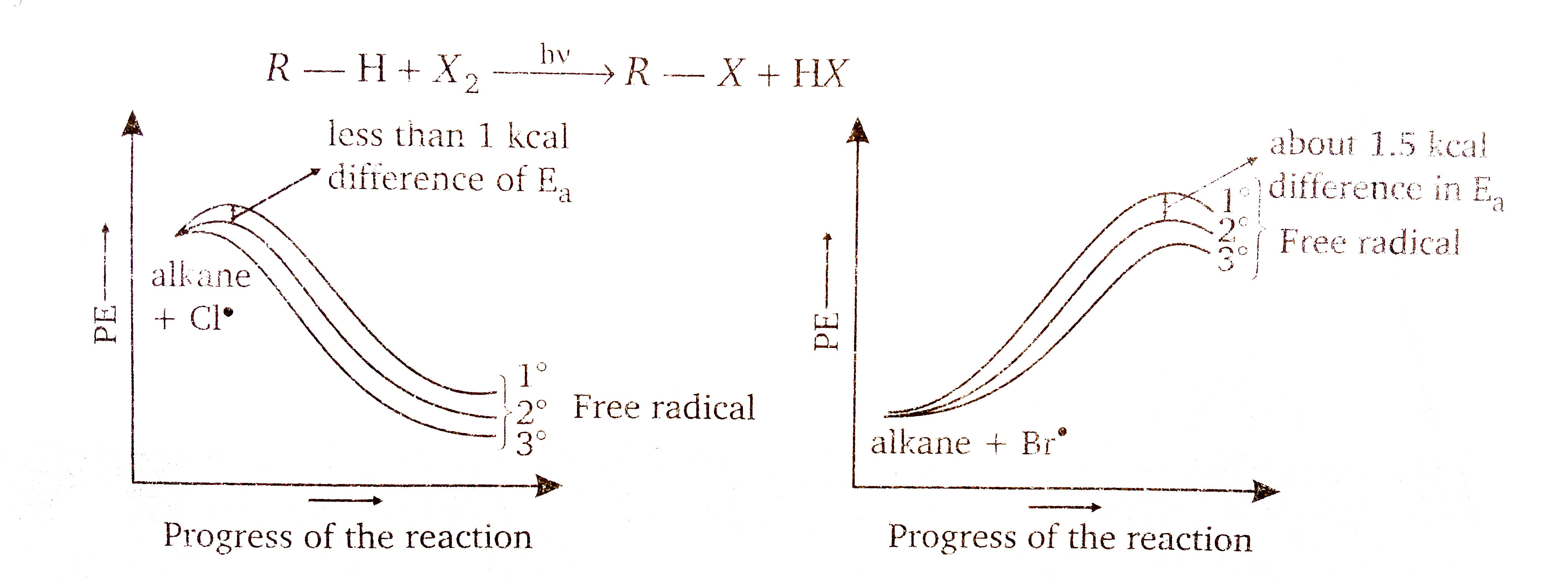Photohalogenation || Calculation OF Mono and Di-halo Derivatives|| Polyhalogenation || Chlorination and Bromination Selectivity
Step by step video solution for Photohalogenation || Calculation OF Mono and Di-halo Derivatives|| Polyhalogenation || Chlorination and Bromination Selectivity by Chemistry experts to help you in doubts & scoring excellent marks in Class 12 exams.
Updated on:21/07/2023Similar Questions
Knowledge Check
Calculate the number of monochloro derivatives that formed when neo-pentane is chlorinated?
A1B2C3D4It we see the reaction of methane with halogen, the rate determining step for chlorination is, endothermic reaction of the chlorine atom with methane to form methyl radical and a molecule of HCl. So free radical is the intermediate of the reaction. Formation of free radical depends upon the energy required to break a bond between a hydrogen atom and a carbon atom. Chlorination of propane and Bromination of propane. when compared it is found that bromination is more selective than chlorination. The probability factor for 3∘,2∘,1∘H atom is 5.0:3.8:1.0 at 25∘C for chlorination.
Isobutane when reacts with chlorine in presence of ultra violet radiations yield 2 products primary hydrogen substituted and 3∘ hydrogen substituted Find their % in product mixtureA64% 36%B72% 28%C36% 64%D30% 70%Halogenation is a substitution reaction, where halogen replaces one or more hydrogens of hydrocarbon

Chlorine free radical make 1∘,2∘,3∘ radicals with almost equal ease, whereas bromine free radicals have a clear preference for the formation of tertiary free radicals. So, bromine is less reactive, and more selectrive whereas chlorine is less selective and more reactive.
The relative rate of abstraction of hydrogen by Br∗ is
3∘1600>2∘82>1∘1
3∘5>2∘3.8>1∘1
1-halo-2,3-dimethyl butane will be obtained in better yields, if halogen is:ABr2BCl2CI2Dcan't be predicted
Photohalogenation OF Alkanes, Flourination, Chlorination, Bromination, Iodination, Reed's Reaction, Pinnacol Formation, Hunsdieker Reaction
View SolutionRead the passage given below and answer the following questions:
Alkyl/Aryl halides may be classified as mono, di or polyhalogen compounds depending on one, two or more halogen atoms in their structures. Alkyl halides are prepared by free radical halogenation of alkanes, addition of halogen acids to alkenes and replacement of -OH group of alcohols with halogens using phosphorus halides, thionyl chloride or halogen acids. Aryl halides are prepared by electrophilic substitution to arenes.
The following questions are multiple choice questions.
Choose the most appropriate answer:
Complete the reaction:
H3C−Br+AgF→
View SolutionHalogenation is a substitution reaction, where halogen replaces one or more hydrogens of hydrocarbon

Chlorine free radical make 1∘,2∘,3∘ radicals with almost equal ease, whereas bromine free radicals have a clear preference for the formation of tertiary free radicals. So, bromine is less reactive, and more selectrive whereas chlorine is less selective and more reactive.
The relative rate of abstraction of hydrogen by Br∗ is
3∘1600>2∘82>1∘1
3∘5>2∘3.8>1∘1

What is the value of x (% yield of product)?
View SolutionHalogenation is a substitution reaction, where halogen replaces one or more hydrogens of hydrocarbon

Chlorine free radical make 1∘,2∘,3∘ radicals with almost equal ease, whereas bromine free radicals have a clear preference for the formation of tertiary free radicals. So, bromine is less reactive, and more selectrive whereas chlorine is less selective and more reactive.
The relative rate of abstraction of hydrogen by Br∗ is
3∘1600>2∘82>1∘1
3∘5>2∘3.8>1∘1

Above product will obtained in better yield if X is
View SolutionHalogenation is a substitution reaction, where halogen replaces one or more hydrogens of hydrocarbon

Chlorine free radical make 1∘,2∘,3∘ radicals with almost equal ease, whereas bromine free radicals have a clear preference for the formation of tertiary free radicals. So, bromine is less reactive, and more selectrive whereas chlorine is less selective and more reactive.
The relative rate of abstraction of hydrogen by Br∗ is
3∘1600>2∘82>1∘1
3∘5>2∘3.8>1∘1
Which of the following will give five monochloro products, when allowed to react with Cl2 in presence of sun light (excluding stereoisomers)?
View Solution
